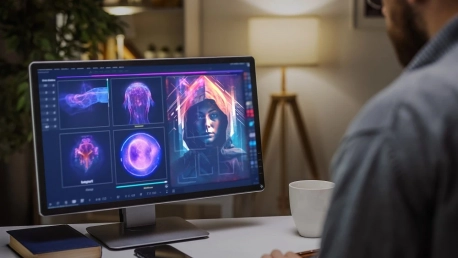The digital art scene is rapidly transforming with AI-driven tools leading the charge. Stability AI’s latest offering, Stable Diffusion 3, is creating ripples in the realm of AI art generation. It stands toe-to-toe with the likes of Midjourney 6 and DALL·E 2, reshaping the competitive landscape. These technological marvels are empowering visual creators across various disciplines, signaling a significant overhaul in how art is conceived and produced. Stable Diffusion 3 doesn’t merely represent another version release; it’s a transformative shift in the creative process, blurring the lines between technology and artistry. As these tools become more accessible and sophisticated, they’re revolutionizing the field, offering unparalleled opportunities for innovation and expression in digital art creation.
Introducing Stable Diffusion 3
Stable Diffusion 3 is Stability AI’s ambitious leap forward in AI-powered digital art generation. Building upon the foundations set by its predecessors, this new iteration boasts significantly enhanced capabilities. Predominantly, its strength lies in producing high-resolution, complex images that effortlessly handle multiple subjects within a frame. Innovations in visual quality and style recognition make it a noteworthy competitor, positioning it as a tool that beautifully turns textual descriptions into intricate visual artworks.Furthermore, Stable Diffusion 3 emerges as a versatile tool for creators. It caters to the needs of a diverse audience, enabling users to see their descriptive prompts come to life with newfound specificity. Whether it is embedding text within images or conjuring scenes from vivid descriptions, the software demonstrates an impressive understanding of user input, showcasing a substantial leap in the fidelity and detail of AI-generated art. With its anticipation of offering image editing and animation features in the near future, it promises even greater personal creative control.
The Competition: Midjourney 6 and DALL·E 2
Midjourney 6 continues to enchant its users with a unique aesthetic that lends a distinctive charm and character to each creation. It thrives on crafting outputs that bear an unmistakable sense of individuality, setting apart the works generated through its algorithms. This attribute of Midjourney 6 gives it an edge for creators desiring a signature touch that might resemble more traditional artistry methods while leveraging the speed and endless possibilities of AI.DALL·E 2, on the other hand, is widely acclaimed for its ability to replicate a panoply of artistic styles with astonishing faithfulness. From imitating classical paintings to generating modern digital art, DALL·E 2 offers users a wide palette of creative styles to choose from. This dexterity makes DALL·E 2 a formidable contender for the top spot in AI art generation, catering to a user base that values precision and stylistic adaptability in translating thoughts to visuals.
Making the Choice
Selecting an AI art generator is becoming more complex as technology evolves. Users must balance computational demands and accessibility with their creative objectives. Each software, such as Stable Diffusion 3, Midjourney 6, and DALL·E 2—offers distinct qualities, ranging from editing capabilities to aesthetic uniqueness and stylistic diversity. For instance, creators eager for editing control and animation might gravitate towards Stable Diffusion 3, now with an early access waitlist reflecting its popularity. Midjourney 6 may attract those desiring a unique style, while DALL·E 2 could be preferred by those requiring a broad range of styles. In this burgeoning field, a creator’s vision largely dictates their choice of an AI art generator, and with the continuous advancements, the art world is on the cusp of exploring new realms of digital creativity, powered by AI yet directed by human artistry.









